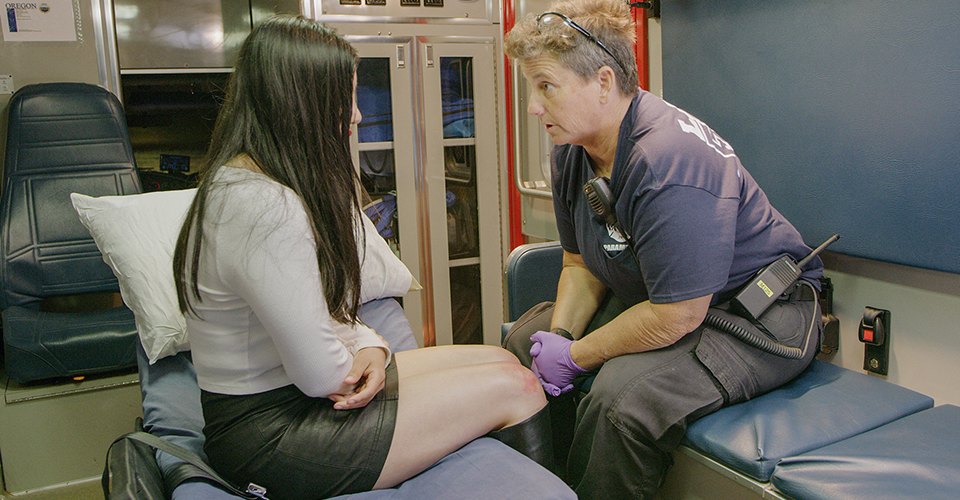Human trafficking is the use of force, fraud, coercion, or manipulation to get someone to provide labor, services, or commercial sex acts against their will. As EMS providers, you may encounter someone who has been trafficked.
There are many myths and misconceptions about human trafficking: that it only affects certain cities or communities, that the person who is being trafficked is choosing to cooperate because they want to, that the trafficker is always a stranger to the victim. In fact, human trafficking is a widespread and diverse issue impacting a variety of vulnerable individuals and communities, often involving a trafficker or third party who is familiar to the victim.
When called to a scene, EMS providers are in a unique position to see conditions in a home or business that might normally be hidden from view. As such, they have an opportunity to offer support and compassion to someone trapped in this situation, by taking steps such as:
-
Not putting patients at risk by asking direct questions about trafficking, being overly aggressive in finding out what’s going on, or confronting them on the situation.
-
Encouraging transport to the hospital as much as possible to create immediate physical safety and for further support as well as resource navigation.
-
Providing resources for the National Human Trafficking Hotline (1-888-373-7888, TTY: 711, or text 233733) or other local resources discreetly and without calling attention.
-
Getting police on scene if appropriate, or to follow up if transport is refused.
-
Calling the National Human Trafficking Hotline after the incident to report what was witnessed while being aware of what EMS can share while protecting patient information.
-
Completing a thorough patient care report, and any other reports to DHHS as needed, in accordance with state and local protocol guidelines on reporting verbally and in writing soon after a call.
EMS providers can be a direct line to help for someone who has been trafficked and feels there are few options. Our EMS continuing education course, Human Trafficking: An EMS Perspective, reviews:
-
What human trafficking is
-
The pervasiveness of human trafficking
-
Common red flags to look for when responding to a call
-
What EMS providers can do if they suspect human trafficking is occurring, and what tools or resources they can use to help the victim
The 24-7 EMS Human Trafficking: An EMS Perspective course provides 1.0 continuing education hours (CEs). For more information and to see a course preview, click here.








.png?width=600&name=HSI-CTA-EmergencyCareTraining%20(1).png)











Comments